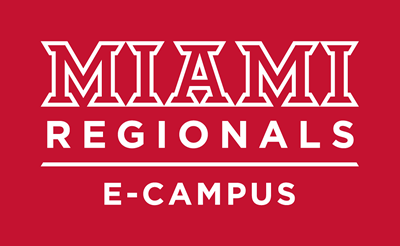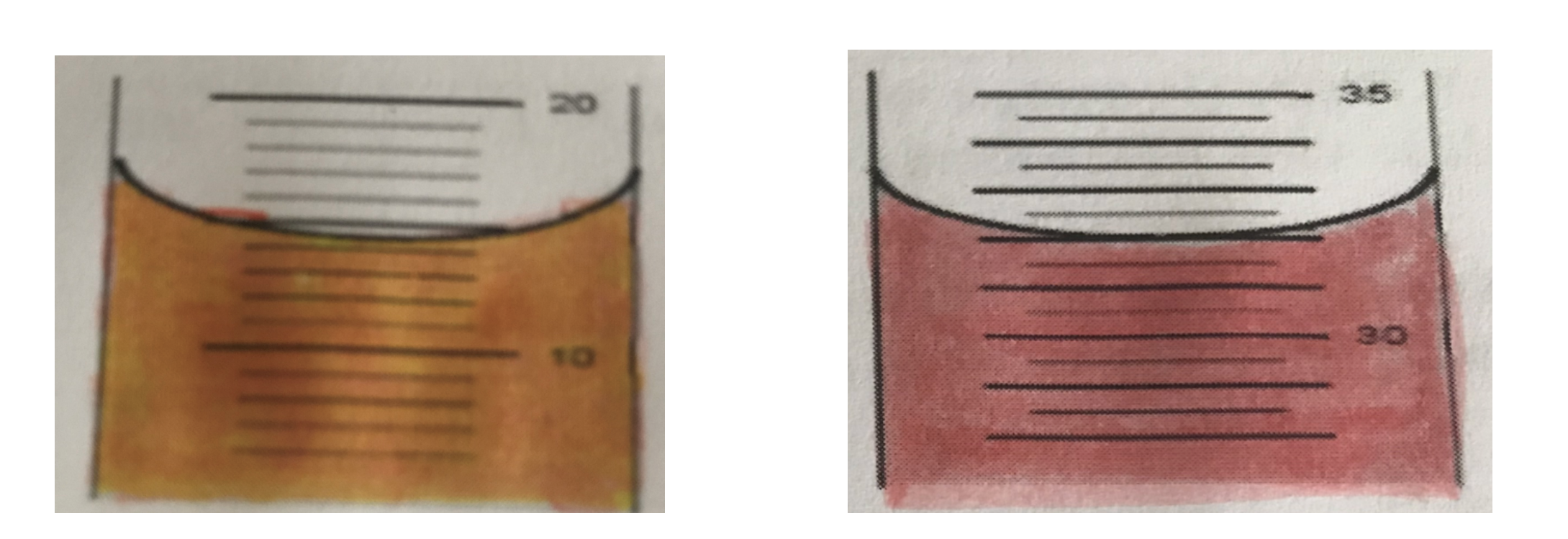
Translating Face-to-face Activities to Online


Compiled By:  Gracia Ostendorf
Gracia Ostendorf 
How Can I Translate My Face-to-Face Activities to Online Activities?
If you haven’t taught an online course before, it may seem like it’s impossible to move some of your class activities online. But there are a number of ways you can “translate” your face-to-face learning activities into a virtual environment using Canvas and the other tools available to you as a Miami instructor.
This article explores lectures, learning activities, and assessments in the online classroom through specific examples that your colleagues have implemented in their Canvas course sites.
Lectures
Special Note on Lectures: Miami’s University systems, Canvas and Webex, allow you to deliver class lectures virtually: either live through video conferencing or asynchronously through video recording. If you hold real-time synchronous classes, it is also recommended that you record them to allow for playback by all students so that they can view vital course content on-demand. Recorded lectures also allow students to take their time, write notes, and reflect on the material over time to develop a deeper understanding of core concepts.
Virtual Lectures in Action

Janet Marshall, PhD
Teaching Professor
Mathematical & Physical Science
Normally in my face-to-face Organic Chemistry courses, I would have posted PowerPoint notes for a chapter online, posted recommended problems from a study guide published by the American Chemical Society, and told students to work a lot of problems from our book. When we switched to remote delivery, I continued to hold synchronous class meetings with video conferencing tools, but I added an element of the “flipped classroom” approach to my course by posting materials online in advance of our class meetings for students to review on their own. I narrated all of my PowerPoint notes and broke the narrated PowerPoints into chunks per day of the class. I also published class notes for every class that included the topics we’re covering, any illustrations to help students understand the material, and recommended problems to work from the text. When all of these materials are ready for students to look at, I post an Announcement in the course letting them know that the notes are up and asking them to take a look before class, which many of them are eager to do. Having materials ready ahead of time helps students better understand the content and allows them to catch up if they miss anything, but there’s still a lot of value in our class sessions as we work through problems together and as students help each other learn through their classmates’ mistakes and questions.

Hirenkumar Gami, PhD
Assistant Professor
Engineering Technology
I deliver a two-hour lecture in a synchronous hybrid setting. I use a Wacom touchpad tablet for solving Math problems. I often use a YouTube video (Industrial Setup) to show details of 3D devices and electronics, which is compensating for the real-time exposure in the lab. In one-on-one meetings, students share their screen on WebEx to show their software lab.
Learning Activities
Formative, Low-Stakes Assessment

Leah Henson
Senior Lecturer
Languages, Literatures & Writing
At the start of my linguistics class, I conduct comprehension checks to see how well students have understood the day’s homework reading. To translate this for remote delivery, I create a Canvas Quiz with multiple-choice and matching questions. It is untimed, and in the Quiz description, I let students know that it is open-book. The Quiz is completed after students have engaged with the lecture material.

Thomas Morgan
Instructor
Languages, Literatures & Writing
Students in my Spanish class get a lot of practice hearing and speaking the language. For remote delivery, I create a Canvas Quiz with an audio file or a YouTube video. Students listen to the audio or watch the video and answer comprehension questions. Next, I create a Canvas assignment with the submission type as “Online” and “Media Recordings.” I type a prompt in the instructions, and students will record a video in Canvas based on those instructions.

Jill Gomez
Senior Lecturer
Languages, Literatures & Writing
Students in my Latin American Studies class spend the last 10 minutes of class writing their reflections on how the day’s class relates to their ongoing country-specific project. I collect these to provide feedback and assign a grade at the end of each unit for the reflections. For remote delivery, I create Canvas assignments for these reflections worth 0 points. I provide feedback on the assignments during the unit and create a no-submission assignment to enter an overall grade for the unit’s reflections.

Eric Luczaj, PhD
Associate Professor
Computer & Information Technology
At the end of each module a very low stakes (1 point per question) retrospective quiz. Here is an example: Module 1: What was New, Useful, and What Did You Master? What was material from this module new to you? What skills, techniques, knowledge, or activities from this module did you find particularly useful? What skills, techniques, or knowledge did you improve/gain during this module?
Class or Group Discussion

Laila Murphy, PhD
Assistant Professor
Education & Society
I use a Team-Based Learning approach for my discussions. My discussion prompts include multiple questions, and I have students work together in groups to come up with a final answer for each question. To set this up online, I assign a discussion leader for each group and instruct the leader to decide when everyone on their team will need to engage in the initial discussion of each question and when the last day to submit the feedback will be. The team leader is then responsible for summarizing their team’s responses and submitting the final answers to a Canvas Discussion that has different threads for each question students are required to respond to.
Laila Murphy's Discussion Board Assignment
Team-Based Learning Discussion Activity for Remote Delivery
Switching Team-Based Learning from f2f to online was a bit challenging at first. However, when comparing the usual discussion for online classes (usually post your answer and then 2 responses to peers, or something like that) and the way I set up my discussion this semester, I noticed the level of engagement is higher using this way.
I did not set up a "minimum" requirement, as in how many responses they need to post. There may be a few factors that may affect this, though. For example, they have met each other and work together for a few weeks in the face to face classes, which means they are already comfortable talking to each other as a team.
Second, I made the set up for the discussion exactly how I would do it in the class. They are not graded for the discussion, but they will, as a team, submit their answers together. So for example, I gave them 5 questions to discuss per week. In the discussion board, I posted the questions as a thread (one question per thread), and they will discuss it as a team. I will assign a discussion leader every week and post this:
Discussion leaders, it will be up to you to decide when will everyone need to at least engage in the initial discussion, and when will be the last day to submit feedback. The discussion leader needs to be clear on when they will want to submit the work so that everyone will have a chance to provide feedback and not be penalized for not participating. If the timeline provided by the discussion leader doesn't work for you, communicate as a team on what will be a reasonable timeline for everyone. Only the team leader needs to submit the paper.
This week's team leader: Mx. ____________
Decide when your team members need to submit their initial response:
When do you need their final responses by:
When are you planning to submit:
Other team members reply to confirm.
Then, by the end of the week, the discussion leader will summarize their discussion and report the team's answer to the 5 questions that I posted. This is similar to what I'd do in my face to face class for the application exercises. Instead of discussing as a team face to face before putting in their answer to the paper, they will discuss the questions using the discussion board. As I said earlier, I get more conversation this way rather than the usual discussion board assignment I have seen in online classes.
I do, however, tell my students that they will get 0 for that assignment if they did not contribute to the discussion. Just like the face to face class, if you just sit there and not contribute to the discussion, you will not get the point as a team. The good thing is I didn't sense any fake "I totally agree with you" type of conversation for the sake of posting something.
This can be used for any type of assignment. I use the discussion board to monitor who did what, and also help steer them in the right direction if the students misunderstand the question or are not challenging themselves enough to dig deeper and think critically. I like being the devil's advocate and ask them "what if" kind of question and after a while, I see that students are doing the same to their team members, too. It's like I am coaching them on how to critically answer the question- the discussion board can be a great tool!

Barbara Caudill
Regional E-Campus Coordinator of Instructional Design
Regional Dean's Office & Mathematical & Physical Science
In one of my Statistics courses, I use a Canvas Discussion for students to share ideas about given statistics problems in small groups and work through any issues they may have, then use a Canvas Assignment to collect students’ individual final answers. I do this by providing students with a PDF file with the problems on it, then asking them to post their initial answers in a Canvas Discussion for their group. In this Discussion, they are required to comment on their group members’ posts, correcting any issues they see, and helping their classmates understand the problems. After the completion of the discussion, students each submit their final answers in a Canvas Assignment.
Barbara Caudill's Discussion Board Assignment
Discussion Chapters 2 - 3
Please open the PDF file to see the problems for the Discussion Chapters 2 - 3. Click the word "REPLY" below to post your answers.
Steps for the discussion:
- The document above contains 4 problems. Everyone should post their initial answers to these problems in the discussion by the due date for this discussion listed in Canvas. You MUST submit ALL your answers in your first post, with correct problem numbering, or you will have points deducted for an incomplete initial post. After your initial post, you should NEVER post your entire set of answers to this discussion again!
- After this initial posting due date passes, the group needs to discuss each other's individual answers to these problems and make sure everyone in the group understands the problems and the answers. Each group member should plan on making at least 2 thorough, descriptive, helpful discussion replies that must contain statistical information or no credit will be given for the reply. Just saying things like "I didn't understand" or "good work" or "Thank you for your help" or "I was confused on this one", will not count as a comment at all!
- You should pick 1 or 2 answer parts to comment on. DO NOT COMMENT ON EVERY ANSWER FOR A PERSON. DO NOT COMMENT ON ANSWERS YOU AGREE WITH. Only comment on answers that you disagree with.
- Comments MUST contain helpful statistical information relating to the problem. Here is an example of a good discussion comment based on the student answer shown below the comment that was submitted by someone:
"Hi Peter, For problem 1, I copied and pasted the data from the spreadsheet into StatCrunch and then did Stat, Summary Stats and found that Q3 was 100 and not 95. The lower limit and upper limit formula are on page 6 of the chapter 2 notes and also is taught on slides 15 and 16 of the lecture presentation. You are not using the correct formula. For example, lower limit is Q1 - 1.5 (IQR) and IQR is Q3 - Q1. Your formula for Upper limit is also wrong, but you can find it on those same slides, 15 and 16. Also, the instructions for problem 1 say to round all values to 1 decimal place and you have rounded your mean to 2 decimal places, so make sure that you correct that before submitting your final answers."
STUDENTS ANSWERS FOR COMMENT ABOVE:
c. Minimum: 0 Q1: 10 Median: 40 Q3: 95 Max: 1445
Lower Limit = Q1-1.5 = 10-1.5=8.5
Upper Limit= Q3+1.5 = 95+1.5=96.5
Outliers- 400,500,1445
d. Mean: 53.41 Median: 36.5 - Comments need to be made on multiple dates. If all of your comments are on the same date, you will not receive full points. An effective discussion needs to span several days. At no point should you ever repost your entire set of answers into the discussion. You post all of your answers one time ONLY!
- You should pick 1 or 2 answer parts to comment on. DO NOT COMMENT ON EVERY ANSWER FOR A PERSON. DO NOT COMMENT ON ANSWERS YOU AGREE WITH. Only comment on answers that you disagree with.
- After the completion of the discussion, each person needs to post their own final answers to all of the problems in the discussion in the Assignment titled Individual Final Answers to Discussion Problems Chapters 2 - 3 by the due date for that assignment.
While this is a group effort, you will only be graded on what YOU specifically do. You will be graded individually for posting by the due date of the initial discussion post and making at least 2 very thorough, constructive statistical comments to your group members. Finally, you will be graded on the correctness of your own final set of answers for all problems that you submit to the assignment called Individual Final Answers to Discussion Problems Chapters 2- 3 (25 points) in Module 4.

Thomas Mays
Associate Professor
Commerce
Many instructors focus on the initial discussion forum prompt, which is important. But what is just as important are the instructions you provide to your students on what is expected in their replies to others in the forum. Simply, "Reply to two other student posts" does not give much direction, and you'll likely end up with a lot of "I agree" responses. Here's an abbreviated example…
Initial prompt: Based on what you have learned in the module, create an innovation-driven hiring philosophy for your small business client, and post it.
Reply instructions: Read the other student posts. Find at least two philosophies that have elements or ideas that you think would improve your philosophy. Reply to the student with what you are adopting for your philosophy and explain why.
Final action: Post your revised philosophy to this Google Doc.
Science Lab

Karen Brown, PhD
Associate Professor
Nursing
Example 1
In my Nursing Fundamentals lab, I provide pictures of items that would be available in the lab. I then ask questions related to the concepts students would have practiced in the lab. For instance, in a face-to-face lab, students would have had actual containers with fluid in them. However, using images from a Google search, I have the students document output from a wound drain.
Karen Brown's Nursing Fundamentals Lab Example 1
A. You emptied the patient’s Jackson-Pratt drain 2 times during your shift. Record the output in the chart below (Volume is shown in MLs. Round to the nearest whole mL).
0800: 1800:

| Time | Drainage Output | Description |
|---|---|---|
Example 2
Also in my Nursing Fundamentals lab, where students have to practice a psychomotor skill of performing a sterile dressing change for a wound, I provide ideas to the students to create their own materials for the lab. I also record a video of myself making these materials so they can see exactly how it’s done. For instance, I sent my students a video of myself creating a “wound” with common household items, then using a folded paper towel for the dressing. Students could record a video of themselves practicing, or simply reflect on what they did well and what they need to practice more.
Karen Brown's Nursing Fundamentals Lab Example 2
Scenarios & Simulations

Steven Schuchart
Instructor
Justice & Community Studies
In my Homeland Security and Emergency Management face-to-face course, I have an exercise that includes “real-world news reporting,” that shows the beginning stages of a potential disaster, the events that occur when the disaster actually happens, the effect of cascading events of catastrophic proportions, and the recovery and mitigation efforts needed after the event. In the classroom, this exercise typically takes two days because after being shown a video segment, students are placed into workgroups and tasked with various challenges that deal with emergency response to the disaster, and then each group reports their conclusions. To adapt this to remote delivery of instruction, students are given a brief live video lecture through Webex or Google Meet on what to expect, what to consider, and what real-world resources might be necessary. Then, they watch the first video clip. Afterward, students can be sorted into groups in Canvas where they can collectively work on responses to the questions posed about the video. Then, we come back to a class video discussion examining their responses. This process repeats for two more videos.

Susan Baim, PhD
Professor
Commerce
This project makes use of a set of cartoons depicting workplace situations (my favorite is to use a series of "Dilbert" cartoons). Students completing this activity will select a set of cartoons (3 works well) – each depicting a different strategic management issue. The goal is to identify the key management principles behind the issue in each cartoon and come up with an approach to “counsel” the cartoon character about what to do in his/her workplace situation. Students are required to do some literature research on their topic to provide a theory-based foundation for their solutions, but innovation and creativity are encouraged in telling each cartoon character how to resolve the issue. Comic Counseling is evaluated based on a PowerPoint presentation (20%) and a final written report (80%). Students may add a brief video presentation explaining their solutions for extra credit. This project can work well in teams or in individual project situations and is readily adapted to other disciplines by altering the cartoons chosen.
Group Project

Carrie Chambers
Coordinator of E-Campus Student Engagement
Regional Dean's Office & Interdisciplinary. & Communication Studies
I use a group project on interpersonal relationships in my online Communications course. At the very beginning of the course, students post to a Canvas Discussion saying what question they'd like to answer about interpersonal relationships. Others comment on ones they're also interested in. I choose 4-6 of these questions to form groups. After the midterm, the groups are posted and students can self-select which one they're most interested in. The end result is a 3-5 page research paper answering the question, a creative illustration of the answer, and peer evaluations.
Creative Assignments

Linh Dich, PhD
Associate Professor
Languages, Literatures & Writing
I have students do a "wandering map" exercise for my in-person class, EGS 301: Writing and the Professions. This wandering map helps students post their interests, experiences, and qualities, and then helps them connect such things. For example, students may write down that they like working with children and playing video games. Initially, this may not seem to connect to each other, however, the wandering map may help students articulate that they like teaching people how to do things, whether it is with children or with gamers online. Ultimately, students create categories, based on the connections they make between their thought-bubbles.
To help students do this online, I asked students to pick a superhero or villain, and then I asked them to develop a Wandering Map for this character. Here's an example of students developing a wandering map for Batman. I then ask students to create categories of strengths and weaknesses based on the wandering map (link is included on the wandering map).
Once we create the strengths and weaknesses categories, I ask students how Batman can use this list for a job interview. For example, what would Batman say if he was asked to describe his weaknesses? Students answered that Batman should talk about how he is not so good at teamwork, but he's working on developing strategies for communicating across differences such as emailing individuals on his team on a weekly basis. Students then do this for themselves so that they can prepare for job interviews.
For this exercise, I use Google Hangouts to talk to students and give instructions, and then we work on Google Drawings to coordinate the thought-bubbles. Because students can work on Google Drawings together, this approach mimics the group work I would normally do for a f2f class.

Tracey Hoffman, PhD
Associate Professor
Education & Society
Some of my most popular assignments are related to Pinterest and Twitter. Since many of the students are already familiar (and using) these sites, they enjoy using them from an academic or teaching perspective. The majority of students in my courses are planning to teach young children. Therefore, it is important to become familiar with resources that may provide ideas for classroom lessons and activities. For example, in the Pinterest assignment, I ask students to "Do a search on a parent-school partnership and "Pin" at least 4 examples of ideas on your board." In another course I teach, I ask students to, "Pin" at least 2-4 examples of home or classroom activities that can be used to introduce preschool students to new foods on your board."
For the Twitter assignment, I ask students to search for 5-10 professional organizations or people that are in the field of early childhood education and then follow these people/organizations on their Twitter accounts.

Martin Johnson, PhD
Associate Professor
Humanities & Creative Arts
In my HST 198 course, World History since 1500, students are assigned a short writing assignment intended to be the equivalent of a 2-3 page essay: "Five Things that Define the Times." This is set up as a Canvas Assignment that asks students to create a small exhibit of five events, people, ideas, objects, etc. that they think will reveal or express significant information about the time period. Images are encouraged but not mandatory (if unable to provide images, a written description is required).
Assessments
Quiz, Test, Midterm, Exam

Martin Johnson, PhD
Associate Professor
Humanities & Creative Arts
In my online course, I use Question Banks in both the midterm and final. This allows me to hand out several possible exam questions in advance (encouraging study and preparation) from which Canvas randomly chooses one or more for the students to write upon AND allows for Turnitin checking.
Research or Final Paper

John Burke
Director, Regional Campus Libraries, Principal Librarian
Regional Libraries, Education & Society, & Computer & Information Technology
Example 1
In a course I teach, once students choose a topic for their research project, I have them fill out a Google Doc with questions and guidance on identifying search terms, synonyms, and related terms, and additional ways that they might narrow their topics to make them easier to search. It gets them to talk the topic through a little, and it tells me a bit more about what they understand already about the topic and why it interests them. It's a graded assignment, but more of a chance for them to reflect on the topic, and then for me to respond with comments and suggestions. I've also used this at times where I'll have students do some initial article or book searching on the topic, which might lead them to ways to narrow the search or alternate search terms.
Example 2
For some courses we work with, students are required to meet with a librarian for a research consultation at the start of their paper or project research. It gives the librarian a chance to suggest ways to search for information on the topic and good databases or other sources to use. We also ask the student to define the topic and share what requirements they have (use only scholarly articles, use a mix of sources, etc.). We can work with students through Google Meet, email, texts, or our chat service. It often leads to students following up with us as they get further into their research and run into problems finding enough sources, or citing sources correctly.
Presentation

Jill Gomez
Senior Lecturer
Languages, Literatures & Writing
I have students give 10-minute presentations in my face-to-face Latin American Studies class. With remote delivery, I require my students to screencast their presentation using a tool like Screencast-o-matic to upload the presentation to YouTube as a video and to link or embed the video in a Canvas Discussion. I provide students with a YouTube tutorial from Screencast-o-matic, along with the E-Campus screencasting guides. The Canvas Discussion is divided into groups, and each group member will post their video presentation, view their group members’ presentations, and respond to three investigation questions for each presentation. I create a no-submission assignment with a clickable rubric to assess each presentation and the replies.
Composition

Martin Johnson, PhD
Associate Professor
Humanities & Creative Arts
In my HST 198 course, I assign students a Comparative Review Essay that is introduced early in the course, but not due until later on. This gives students the opportunity to refer back to the assignment regularly and add details as they progress through the course content. The paper is set up as a Canvas Assignment that checks submissions with Turnitin, and the Assignment instructions also link to an Embedded Librarian page that has videos and other information about finding appropriate online scholarly sources.










